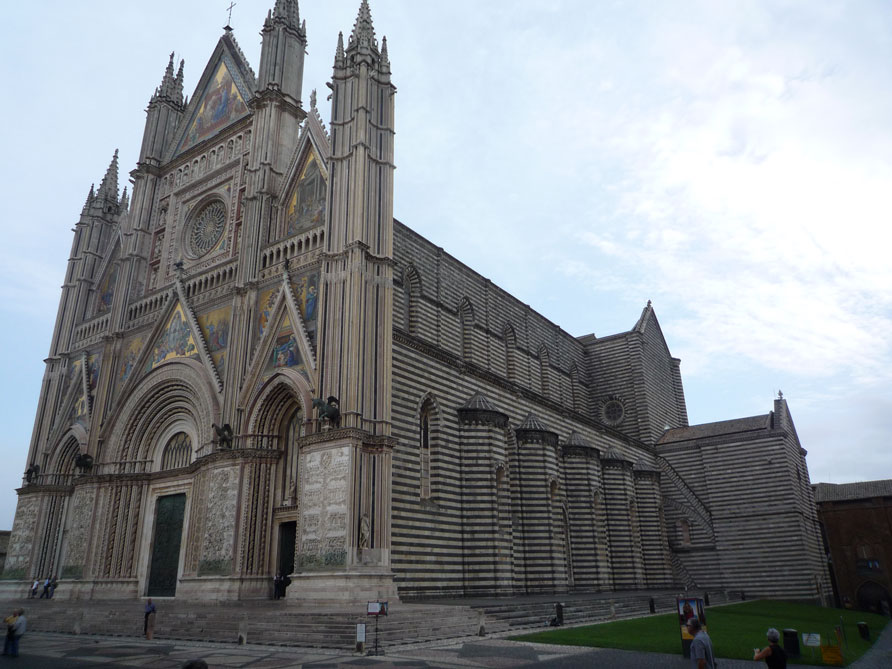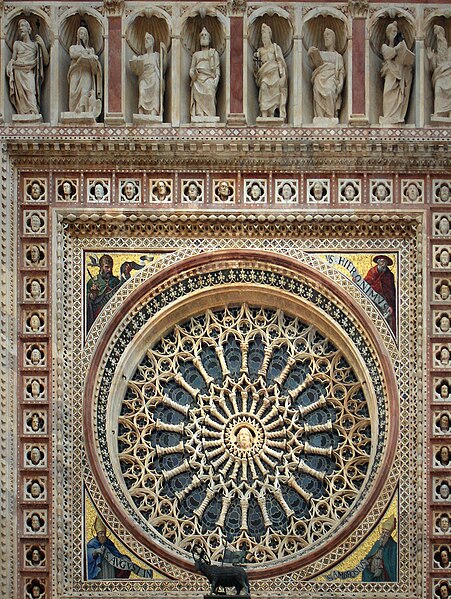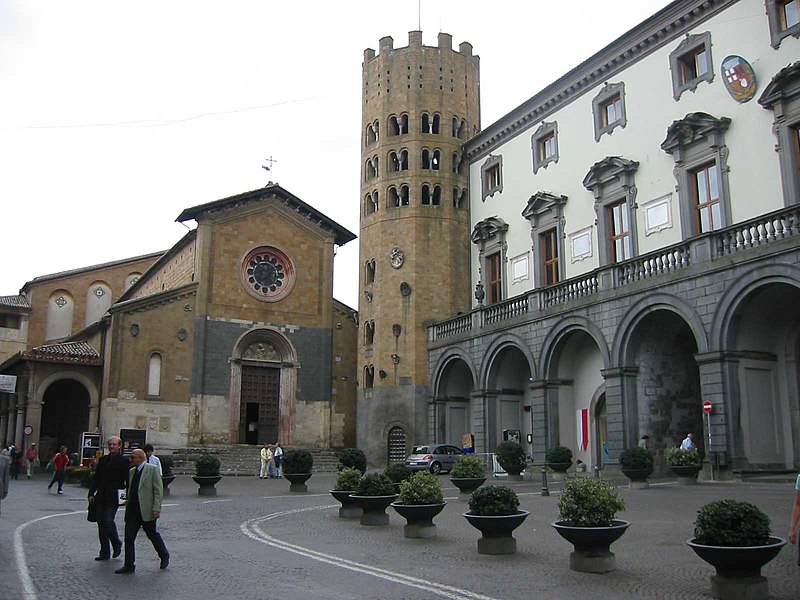The Region of Umbria in Italy.
The account goes that the Eucharistic miracle housed in the Cathedral of Orvieto, the miracle of Bolsena, was the very wonder that convinced Pope Urban IV (reigned 1261-1264AD) to institute the new feast to give honor to the Blessed Sacrament, established by Christ himself at the Last Supper. The new feast, Corpus Christi, would be celebrated on the Thursday following Trinity Sunday, and was established in the year of Urban IV's death, 1264. Of course, the new prayers and hymns for the new occasion were written by none other than St. Thomas Aquinas, the Angelic Doctor (+1274AD).

The Chapel of the Corporal in the Duomo, or Cathedral, of Orvieto.
The famous Raphael presented the Miracle of Bolsena in one of his works in the Raphael Rooms at the Vatican, entitled "The Mass of Bolsena."

The Mass of Bolsena (1512-1514AD) by Raphael.
The Duomo, or Cathedral, of Orvieto is justly famous, for its magnificent facade, in addition to the miraculous corporal. It is a splendid example of the Italian Gothic, and a fitting home for such an item:




Likewise, the town of Orvieto, itself, is rather impressive, sitting as it does upon a bluff, surrounded by city walls. It can be spotted from some distance, indeed:

View of Orvieto, Umbria, with the Duomo visible.
The main square of the city, the Piazza della Repubblica, also features the Church of Sant'Andrea, where Pope Innocent III actually called the tragic Fourth Crusade in 1216AD. Elsewhere, in the Church of San Francesco, Pope Boniface VIII canonized King St. Louis IX in 1297AD.

Piazza della Repubblica with the Church of Sant'Andrea.
This video allows for a virtual walk about the town and surrounding countryside:
In all, Orvieto is a delightful place to visit -- and the crisp and refreshing Orvieto white wine produced in the area is worth a sip. A bottle of Orvieto, purchased in the old city, was this blogger's first purchase of wine...
Live well!

No comments:
Post a Comment